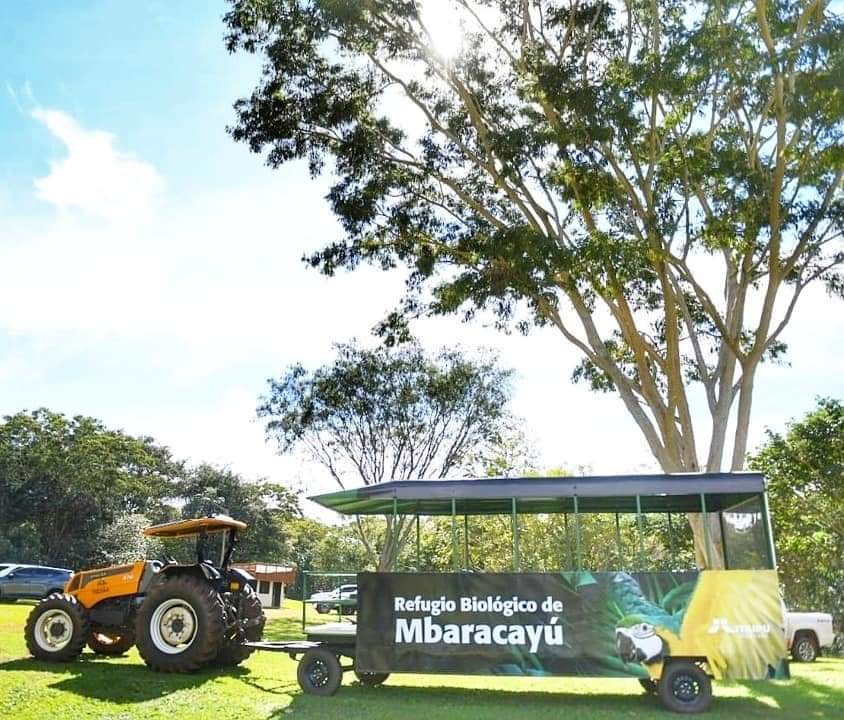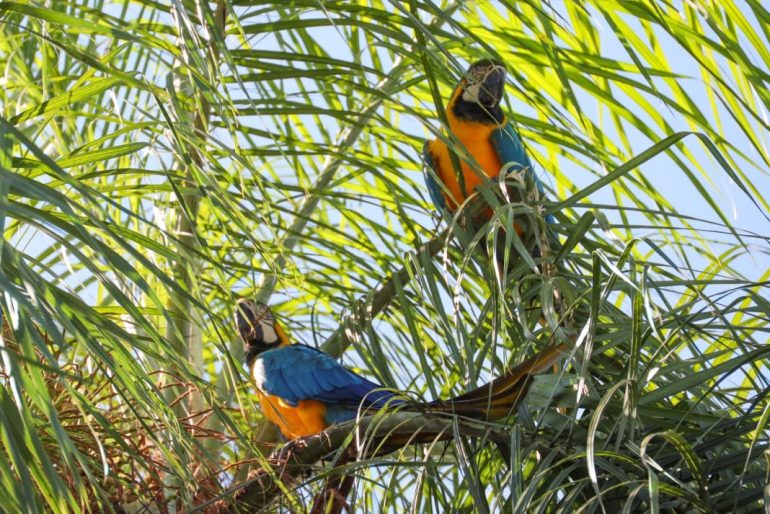Two beautiful Ara Macaws, male and female, were registered in Mbaracayú Biological Refuge, in Paraguay’s Department of Canindeyú. The refuge is funded by the authorities responsible for the Itaipú Dam. People from Mbaracayú report that the specie was not seen in 40 years, making this encounter even more special.
Meet the Mbaracayú macaws !
Gua’a Kaninde (Ara Macaws) is a bird of great size, and colourful plumage. Typically, you will find the red and yellow, blue and yellow, yellow-collared and blue-feathered species in Paraguay. They can reach a longitude of 80 centimetres, and form stable lifetime couples. Seeds and fruit are the major part of the macaws’ diet.
They are cavity nesters. The majority of species nest in cavities in trees, either live or dead. They reproduce once every one or two years. Unfortunately, they are a critically endangered species, mostly due to unrestricted hunt. Over the last couple of years, efforts of preservation are starting to offset that mark.
The Mbaracayú Biological Refuge

The Mbaracayú Biological Refuge is precisely located in Saltos del Guairá, Canindeyú. This city, bordering Brazil, is located 400 kilometres away from Asunción. The refuge established itself as one of the main spots for those who seek to connect with nature. They possess 1,436 hectares of forest near the city. For more information, check Mbaracayú Biological Refuge’s website.
Apart from Mbaracayú, Asora, based in the Asunción Metropolitan Area, is also doing its part to protect and preserve macaws.
Project Canindeyú and its importance
“Project Canindeyú” is supported by Itaipú and its Investigation Centre For Wild Animals (CIASI). The aim is to reintroduce macaws born in captivity into their natural environment. “The arrival of wild macaws is really important,”states Project Coordinator Diana Pesolé. “It means it will be easier for captive macaws to adapt. The wild samples will act as guides to the ones born in captivity, they will help them find food and refuge.”
César Mendoza, Chief of Mbaracayú Biological Refuge, sparked the ecological importance of the site and highlighted that it is product of years of tough work to recover the forest area.
“Macaws coming here implies that in the refuge they can find safe shelter and food. This confirms that the 30-year cooperation between Paraguayans and Brazilians is giving the expected results, in terms of ecological renovation,” he affirms.
The sight of this macaw couple stands as a rebirth of biodiversity in Mbaracayú, and marks a landmark in the efforts of restoring the ecosystems in the Paraná’s Atlantic Forest (BAAPA).


